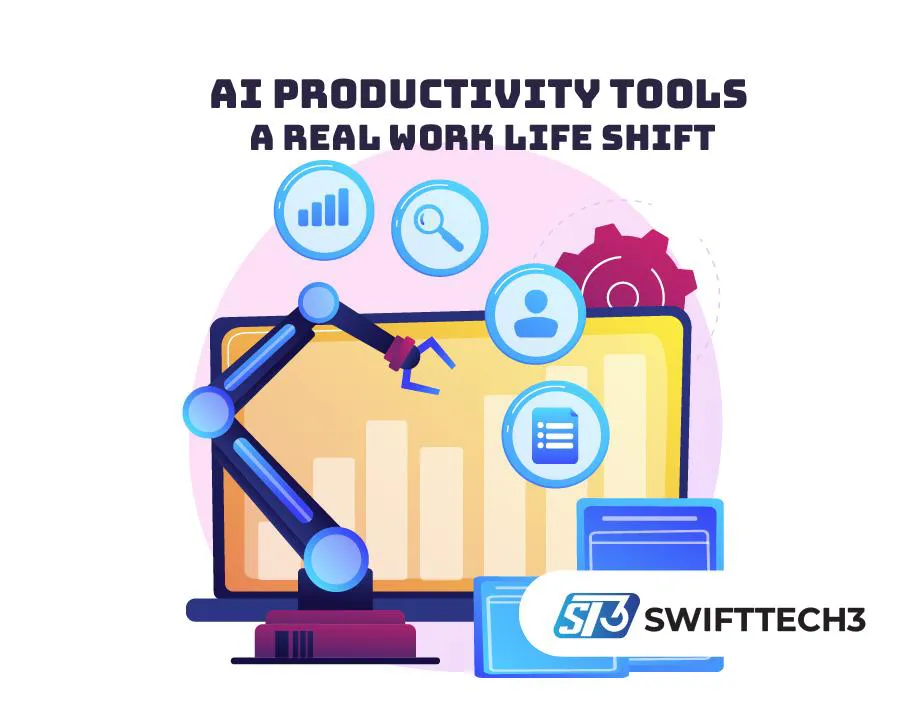Most of us wake up open the laptop and instantly feel drowned in tasks. Emails piling up, reports due, team meetings stacked back-to-back. It’s crazy. That’s why people are turning more and more toward Ai productivity tools. These tools promises to cut wasted time, reduce stress, and make u look smarter at work (even if you just rolled out of bed with coffee).
What Exactly Are Ai Productivity Tools?
Basically, these are apps or platforms powered with artificial inteligence that do repetitive or heavy tasks for you. Stuff like writing drafts, transcribing meetings, analyzing data, even coding lines. Tools like mindgrasp AI can summarize complex materials or lectures in seconds, helping professionals and students alike save serious time. Instead of burning your eyes on spreadsheets for 3 hours, you can get AI to crunch numbers in seconds.
They’re not really magic robots tho, more like assistants built into things we already use like Word, Slack, Google Sheets, Notion etc.
Why Everyone Is Talking About It
The main reason is simple: time saving. But there’s also the hidden part—AI makes junior workers look more senior because the output is polished. That’s changing workplace dynamics, coz someone new in team can produce reports that look executive-level with AI’s backing.
And in hybrid or remote work setups, it’s kinda a lifesaver. You don’t have to chase people for notes anymore, AI writes it all down.
Data That Shows It’s Real
Not just hype talk—experiments and global studies show measurable benefits. For example, in one official OECD study, workers using AI tools reported productivity gains between 5% to 25%. That’s hours every week, not just minutes.
Also in pilot programs like UK government using Microsoft Copilot, employees saved about 26 minutes per day. Imagine multiplying that across thousands of workers—that’s insane amount of saved labor.
Examples of Ai Productivity Tools in Real Life
Writing & Comms
- ChatGPT + Copilot: drafts, summaries, translations.
- GrammarlyGO: style and tone, not only grammar.
- AI SEO Content Writer: High-Quality Articles That Bypass AI Detection
Translate
- Lara Translate: translations in 200+ languages for text, documents and APIs
- Otter.ai: auto transcribes and makes notes.
- Fireflies.ai: summarize long convos, highlight actions.
- GitHub Copilot: developers cut hours by auto-complete whole functions.
- Notion AI: generates tasks, automates docs.
- Asana AI: creates tasks directly from convos.
- Faster output: no need to manually type every boring line.
- Better quality: reports, emails, coding—look more polished.
- Stress less: brain focus more on strategy or creative side.
- Learning curve shorter: new hires ramp up quicker with AI help.
- Mistakes: AI sometimes just make up wrong info (hallucinations).
- Pressure: bosses may expect more output since AI “saves time”.
- Privacy risks: sensitive company data shouldn’t just be pasted into random tool.
- Always fact-check AI drafts before sending.
- Start with small tasks, don’t overhaul all workflows at once.
- Train ur team on how to ask better prompts.
- Keep human decision in the loop, don’t rely blindly.
- Review data policies before using any new platform.
Meetings
Coding
Project Management
The Good Stuff
The Not So Good
So, it’s not perfect and must be handled with care.
Tips To Use Ai Productivity Tools Smarter
FAQs
Some are free, but advanced features usually subscription.
It will transform them. Repetitive roles shrink but higher-value roles grow.
Yes, maybe more than big corporates. They don’t have extra manpower so AI fills gaps.
Conclusion
At the end of the day, Ai productivity tools are becoming less “nice-to-have” and more “must-have”. They’re already changing how people draft, plan, code, and communicate. Real studies like OECD show the productivity boosts are not just hype, they are happening now.
The best way to think: AI should handle the boring repeatitive stuff, while humans focus on the creative and complex. That’s how we get balance instead of burnout.
So yeah, if you feel swamped with endless tasks tomorrow, maybe give an AI tool a spin—it might just give you back a big slice of your time.


